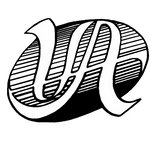
Point of No Return by Matt Hall
82nd Airborne Division, June 1944.
In the predawn hours of June 6th, 1944, the Allies launched Operation Overlord, the invasion of France. The mission was to assault a 45 mile stretch of Field Marshal Erwin Rommel’s Atlantic Wall along France’s Cotentin Peninsula. The beachhead was divided into five assault zones, code named Gold, Sword, Juno, Omaha and Utah. Supporting the landings was a fleet of more than 5,000 vessels ranging from monstrous battleships down to assault landing craft. Spearheading the invasion of Hitler’s Festung Europa was the 82nd Airborne, one of three airborne divisions assigned to drop in advance of the landings to seize vital objectives and prevent German reinforcements from reaching the beaches.
The Story
Point of No Return depicts the D-Day night jump of the 82nd Airborne, code-named Operation Boston. The artwork features an American paratrooper, his chute deploying behind him, as he exits a mortally wounded C-47 somewhere over Normandy, France. He and his fellow troopers have a vital role in the success of Overlord. Dropping behind Utah, the only available beach on the upper flank of the peninsula, the 82nd Airborne has been ordered to capture Sainte-Mère-Église, seize and secure crossings of the Merderet River at La Fière and Chef-du-Pont, and destroy the crossing points on the Douve River at Beuzeville-la-Bastille and Étienville.
Leading the division into Normandy is Force A, consisting of approximately 6,400 men from the pathfinders, the three parachute regiments, the artillery battalions and combat engineers. Commanded by General Jim Gavin, Force A will be followed a few hours later by the gliders of Force B, while the rest of the division will come ashore on the beaches.
After a 24-hour delay due to inclement weather over the English Channel, the 378 transport aircraft of the 82nd Airborne lifted off from multiple airfields in England. The veteran 505th Parachute Infantry regiment—this will be their third combat jump—is in the vanguard, followed by the 508th PIR and 507th PIR, both on their first combat mission.
The nine pathfinder C-47s crossed the coast a little after midnight, with the plan for the 505th PIR to drop on DZ-O at 01:15 AM, the 508th PIR onto DZ-N at 02:08 AM followed by the 507th PIR onto DZ-T 30 minutes later. Unknown to the main echelon of Force A, their pathfinders, with the exception of those from the 505th PIR, have largely been misdropped or are engaged in firefights and unable to set up their navigation equipment. The lack of navigational beacons, combined with unexpectedly thick banks of clouds and the intense German antiaircraft fire that erupts as the formations pass into occupied France, wreak havoc on the Troop Carrier formations. The armada of C-47s, their pilots climbing or descending to avoid collisions and accelerating to avoid the relentless flak, are soon scattered all across the Cotentin Peninsula.
The jump caution light is flipped to green and the troopers surge forward, tumbling out into the night sky, not knowing what to expect when they hit the ground. For the paratroopers of the 82nd Airborne and for the Allies as well—who have gambled everything on this “Great Crusade” against Nazi Germany—June 6, 1944 is truly the point of no return.

